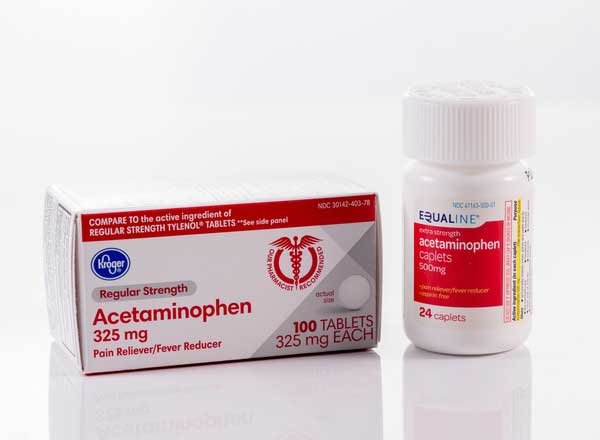With allergy season coming up, many people will be looking for ways to relieve their stuffy noses, sore throats, and other bothersome symptoms. A combination drug containing acetaminophen, phenergan, and phenylephrine can provide multi-symptom relief, but it’s important to understand exactly what these medications are and how they work before taking them. This article will break down key details about this drug so you can decide if it might be helpful for you.

What is Acetaminophen, Phenergan, and Phenylephrine?
Acetaminophen, phenergan, and phenylephrine is an over-the-counter (OTC) product used to treat allergy and common cold symptoms. It contains three active ingredients:
- Acetaminophen – A pain and fever reliever
- Phenergan – An antihistamine that blocks the effects of histamine to provide allergy relief
- Phenylephrine – A decongestant that constricts blood vessels in the nose to reduce congestion
This combination medication is sold under brand names like Theraflu Cold & Sore Throat as well as Theraflu Flu & Sore Throat.
Dosages for Multi-Symptom Relief
Acetaminophen, phenergan, and phenylephrine comes in powder packets:
- 325mg acetaminophen per packet
- 20mg phenergan per packet
- 10mg phenylephrine per packet
The recommended dosing for adults and children ages 12+ is:
- Dissolve 1 packet in 8 oz hot water
- Drink the entire 8 oz within 10-15 minutes
- Do not exceed 1 gram (1000mg) acetaminophen per dose or 4 grams per day
This provides a solid dose to combat multiple symptoms while staying within the maximum safe limit for acetaminophen. Those under 12 should not take this without medical approval.
Potential Side Effects to Know About
While acetaminophen, phenergan, and phenylephrine can be helpful for allergy relief, it does come with potential side effects including:
- Low blood pressure (hypotension)
- Rapid heart rate (palpitations/tachycardia)
- High blood pressure (hypertension)
- Peripheral and organ vasoconstriction
- Anxiety, confusion, dizziness and more
Less common but serious risks involve suppressed white blood cell counts that raise infection risk along with reduced platelets that impair normal blood clotting.
Rare hypersensitivity skin reactions like Stevens-Johnson syndrome are also possible with symptoms involving blistering rashes, reddening and peeling skin. Discontinue use and seek emergency care if these occur.
Interactions with Other Medications
Before taking acetaminophen, phenergan and phenylephrine, be sure to tell your doctor about any other medications you take as serious interactions can occur. This includes:
- Predimed – Hypertension risk
- Accident – Lowers seizure threshold
- Diclofenac – Kidney dysfunction
Moderate interactions are also possible with drugs like exenatide, ivacaftor, midazolam intranasal spray and others. To avoid complications, thoroughly discuss your medical history and medicines with your physician.
Important Warnings and Precautions
In addition to potential side effects, there are other key warnings and precautions involving this allergy drug:
Do not take if you have:
- Hypersensitivity to any ingredients
- Asthma
- Narrow-angle glaucoma
- Symptomatic prostate enlargement
- MAOI use in past 14 days
Use caution if you have:
- Liver problems
- Chronic alcohol use
- Rare skin reaction risks
- High acetaminophen dose/use
Pregnant or breastfeeding mothers should also use only if clearly needed and under medical supervision due to risks passing to infants.
The Bottom Line
Acetaminophen, phenergan and phenylephrine can help knock out multiple allergy symptoms with its blend of pain/fever relief, antihistamine and decongestant effects. However, the potential side effects highlight why speaking to your pharmacist or physician first is recommended, especially if you take other medications or have certain medical conditions. Use as directed and stay aware of all warnings to get the benefits while minimizing health risks.
